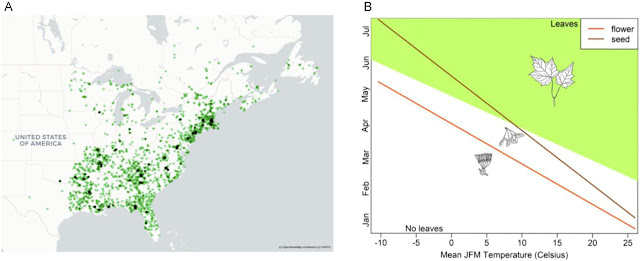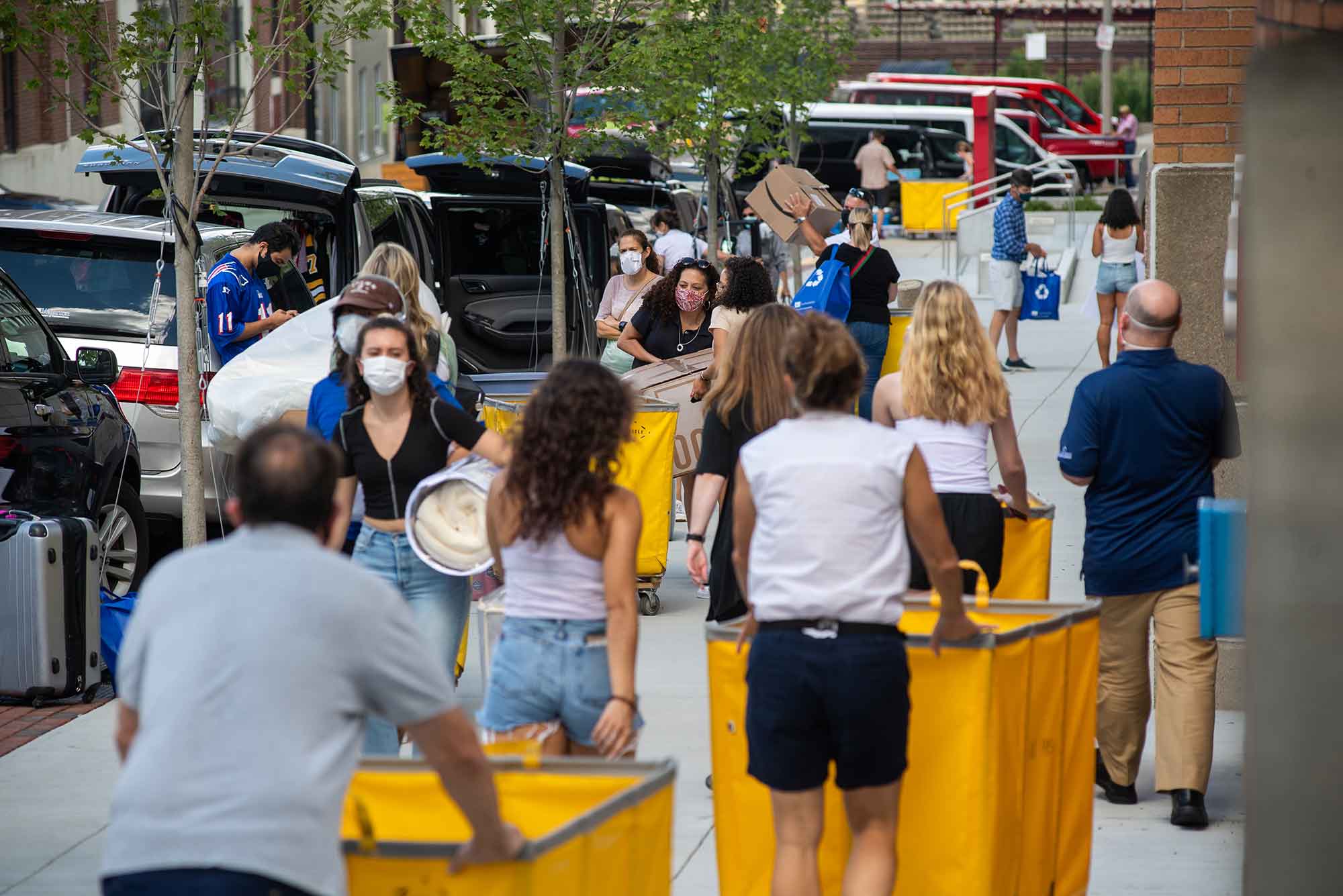“The discoveries which we make abroad are special and particular – those which we make at home are general & significant. The further off the nearer the surface. The nearer home the deeper.” Henry David Thoreau in his Journal.
In a recent paper, we describe macrophenology as an exciting new field investigating large scale patterns of the timing of biological phenomena, such as flowering, leafing out, and bird migration. Macrophenology includes responses to a variety of drivers, including global climate change, across biomes, land‐use types, and species' ranges.
 |
| Figure 1. The timing of flowering, fruiting and leafing out in red maples in response to temperature can be examined over all of eastern North America using herbarium specimens. |
Macrophenology can provide exciting and novel insights due to theoretical and applied advances and emerging tools, such as the availability of digitized museum specimens and remote sensing data. Four key areas of macrophenology have special opportunities: (1) global drivers of phenology, (2) species range limits (3) interactions and mismatches among species, and (4) ecosystem processes.
 |
| Figure 2. Core concepts of macrophenology and their linkages. |
Macrophenology can also investigate historical biogeography, phylogenetic patterns and geographic gaps in phenology research.
Title: Macrophenology: insights into the broad‐scale patterns, drivers, and consequences of phenology.
